Construction at Park St. Click for larger image. (from the BPL)
On September 1, 1897 Boston opened for business the first Subway in the United States. It was modeled after several European cities (including London which had launched their own 34 years earlier) and was followed a few years later with a subway in New York City.
Why Did Boston Need a Subway?
ASCE outlines some of the challenges the city was facing at that time:
The Construction
Construction of the subway on Tremont Street (from WikiCommons)
The initial construction of the line included 3 stations (Park St, Public Garden, and Boylston), was 0.6 miles long, was a 3 minute ride in total, and was budgeted at $5 million. They combined these subway stations with the elevated tracks above sot aht the subway just became a part of the current train system.
Construction began in 1895 and finished in 1897. Shockingly, the project came in on time, and under budget.
They borrowed techniques from Europe to complete the tunnels and there a few problems along the way:
The New Subway Opens
At 6AM on September 1, 1897 the subway opened to the public with 100 people on the inaugural ride. Over 100,000 people would ride the train on that first day.
Here's a few pictures of the new line.
On a test run in the new Park Street Station (From the BPL)
The subway entrance of the Public Garden tunnel. From WikiCommons.
The Park Street Station. From the BPL.
It Was a Big Story!
The new subway was a national sensation and was covered extensively in newspapers and magazines. Here's a couple of examples
The cover of The Boston Globe on September 1, 1897. Click the image for a larger view. (From WikiCommons)
The cover of Scientific America on September 18, 1897. Click for a larger image. From magazineArt.org
How the Tremont Street (Green) Line Grew Over Time
Here's a quick map that shows how the line started (stations are marked as starting on ) and how it grew over time.
Image from Wikipedia – Click on image for a larger version
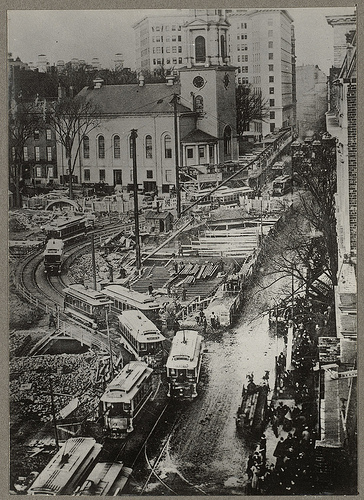
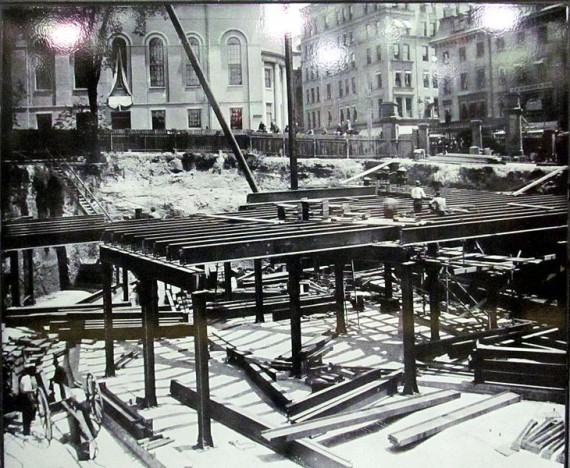
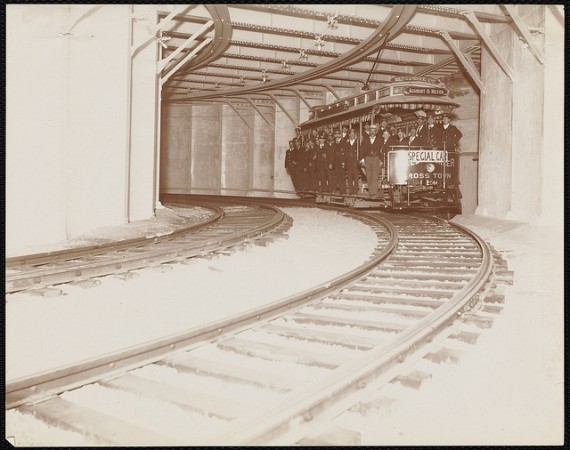
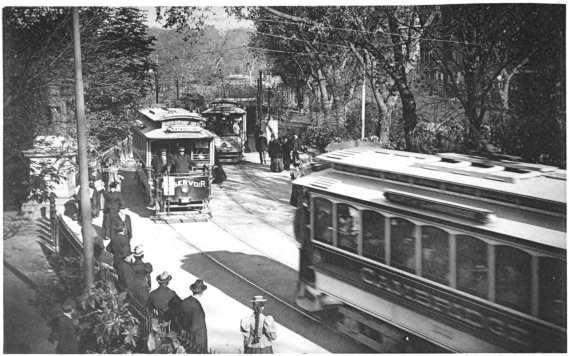
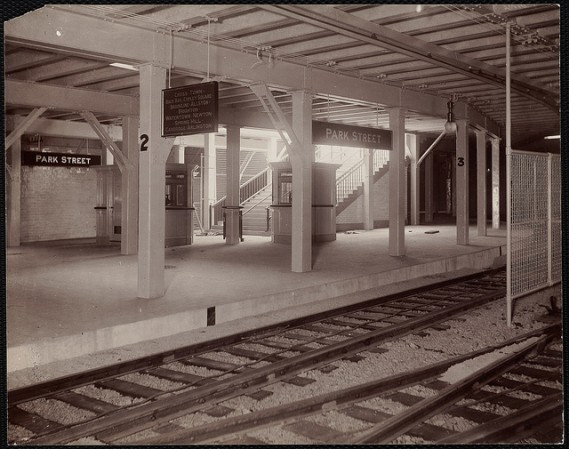
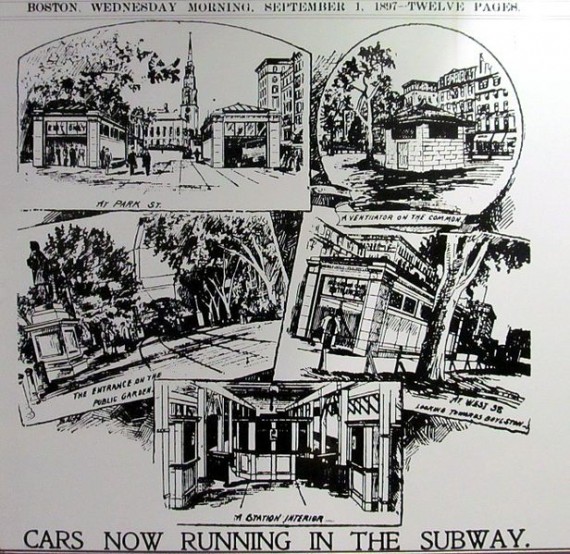
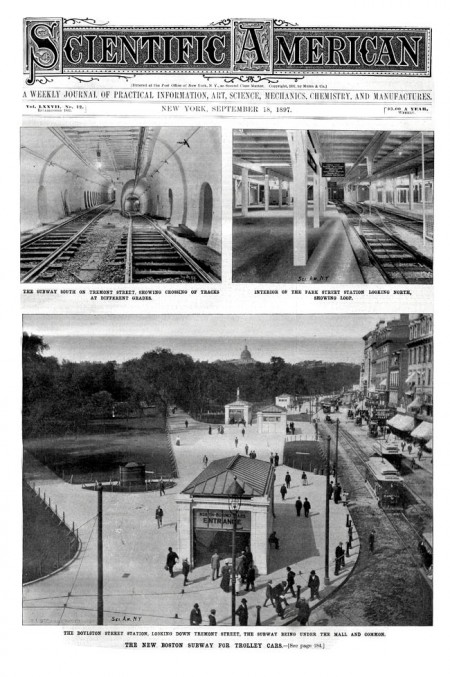
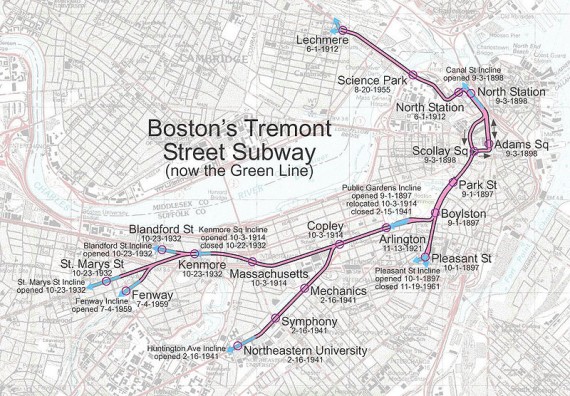
Follow Us On